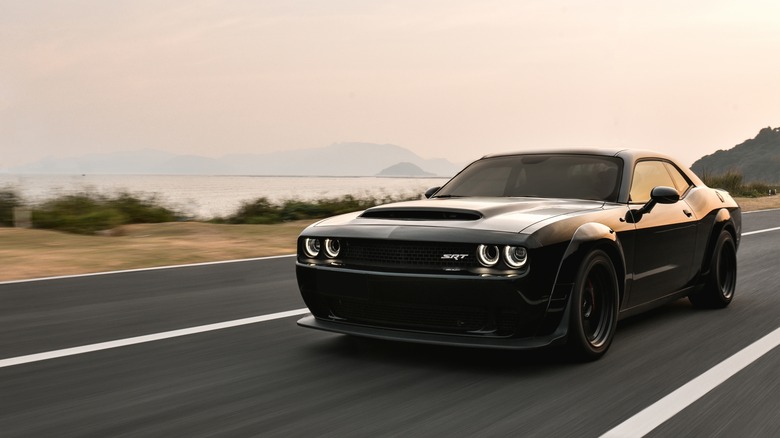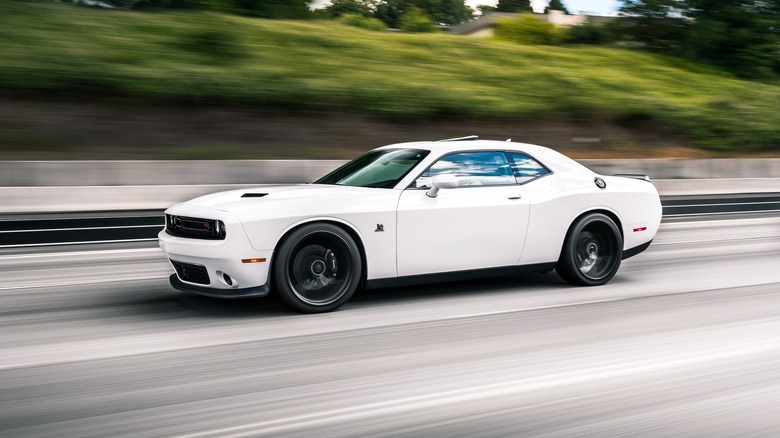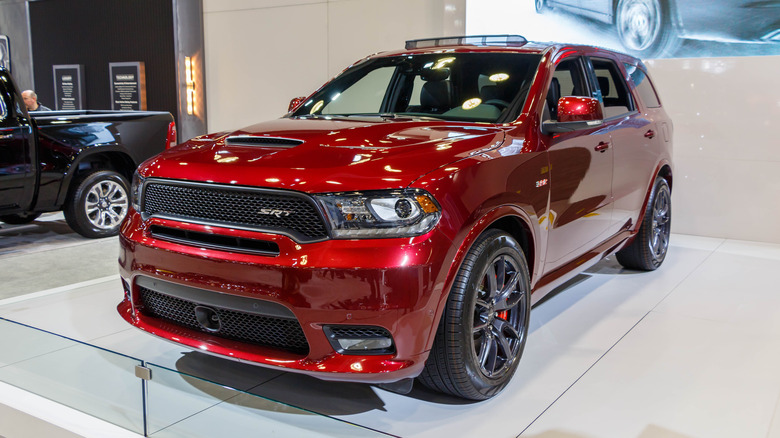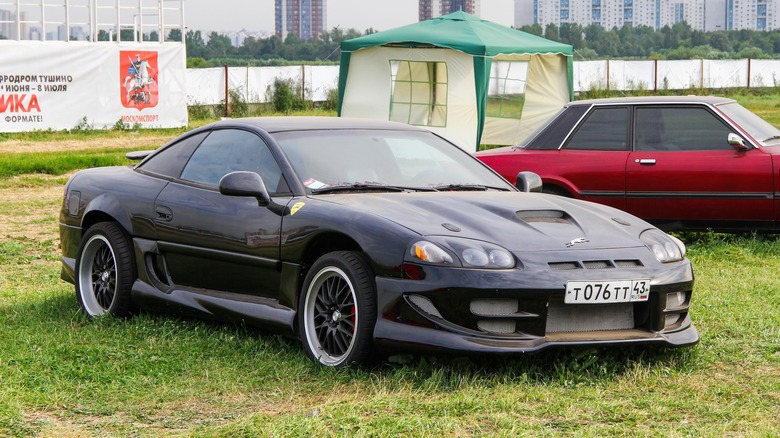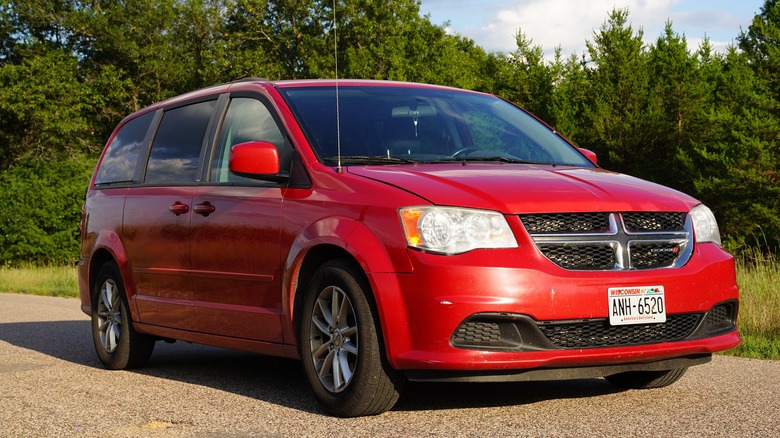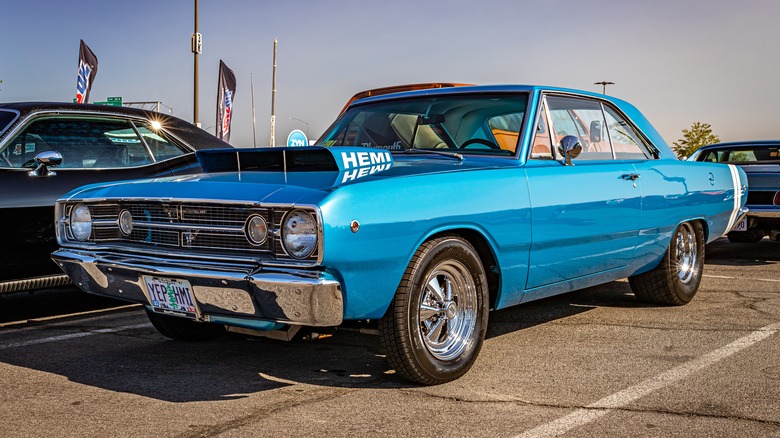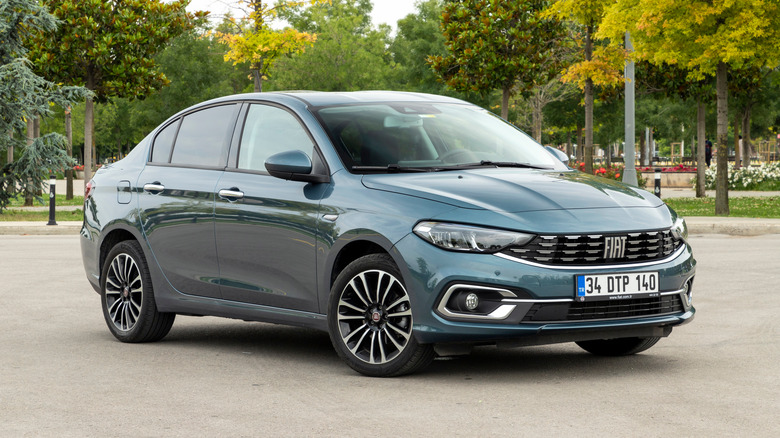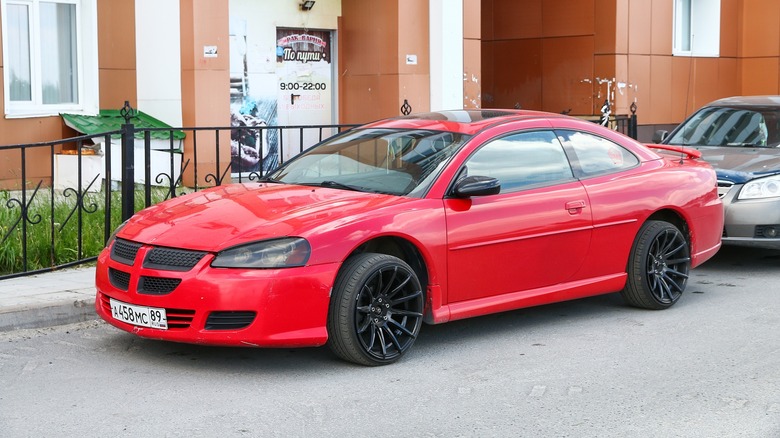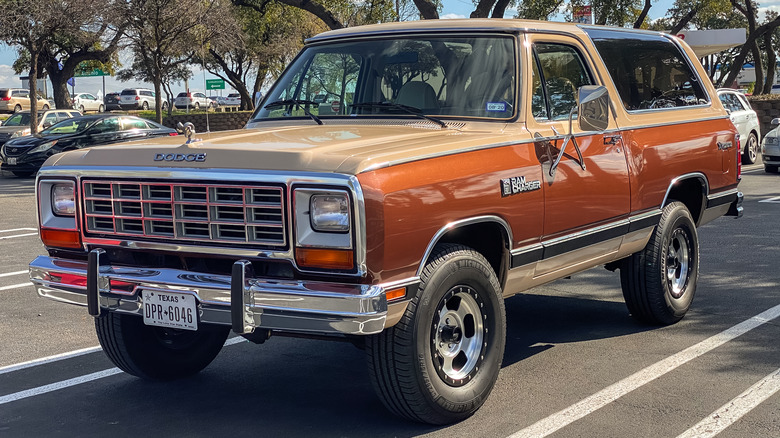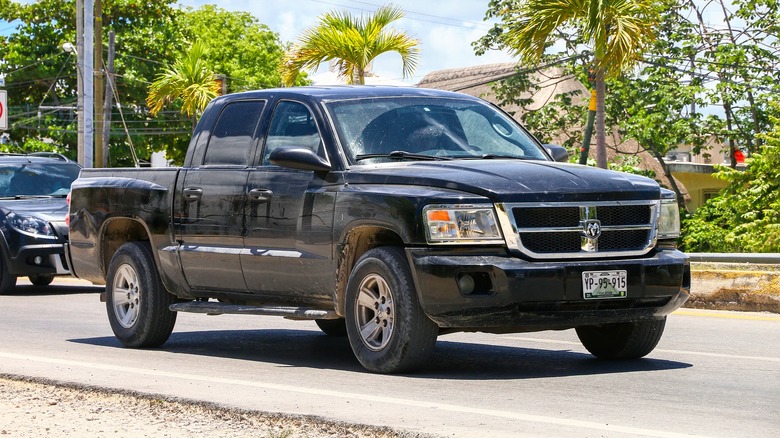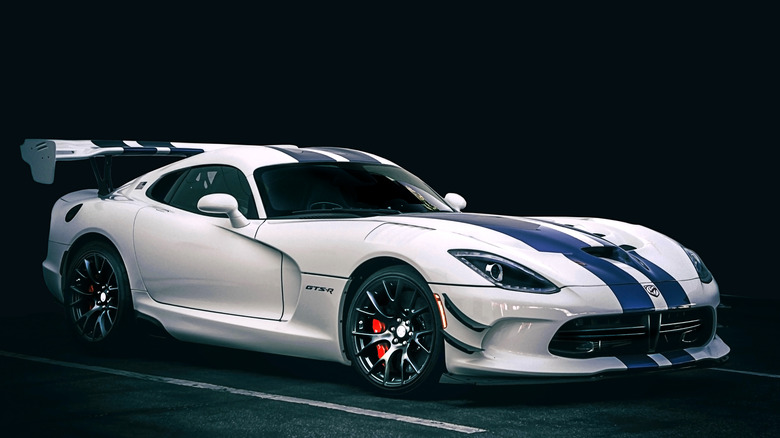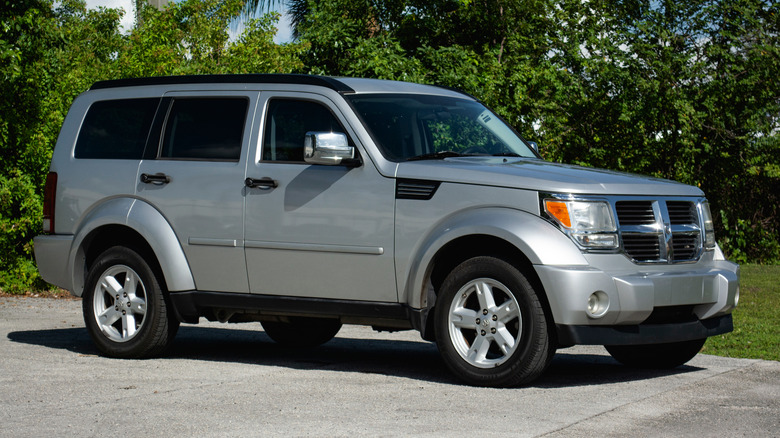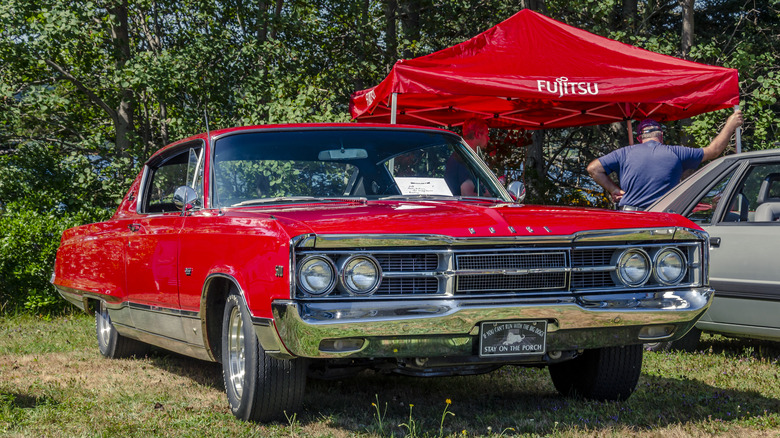12 Cars Dodge Should Have Never Discontinued
Dodge is one of America's oldest car brands, dating back to the early 1900s. It's part of the Stellantis group that includes Chrysler, Fiat, and Jeep along with high-end brands like Alfa Romeo and Maserati. Dodge is perhaps best known for the Charger and Challenger muscle cars and the Ram truck badge. In fact, the Ram brand is so popular that it was spun off into its own sub-brand in 2009.
These days, Dodge is more adept at removing cars than adding them. It only has a few active models in its lineup today and, until this year, it hadn't released a brand-new vehicle in a decade. Today's Dodge lineup includes the classic Challenger and Charger muscle cars and two SUVs, the Hornet and the Durango. The Hornet is Dodge's most recent release, and more are coming.
However, the big problem for Dodge right now remains its lack of models. Few manufacturers can survive on just four models, especially when they're not luxury vehicles or sports car brands that can charge an arm and a leg. Dodge could resurrect some old nameplates in today's landscape and probably do reasonably well. A lineup with plenty of options would, at least, get people into the door, especially in the wake of declining Ram 1500 sales.
Dodge Charger and Challenger
First, let's talk about the Charger and Challenger. Dodge has every intention of discontinuing the iconic muscle cars in 2023. The reasoning is pretty sound. Stellantis is investing in electrifying its lineup, and the two muscle cars are the opposite of fuel-efficient. However, American brands are known for their muscle cars, and it's surprising to see Dodge getting rid of both of them. It would be like Chevy discontinuing the Camaro or Ford discontinuing the Mustang.
Unfortunately, this is a decision made by higher ups at Stellantis and not Dodge. Both vehicles sell pretty well. In fact, the Dodge Challenger is the reigning sales king of two-door American muscle cars, and the Charger pushes even more units. That alone is a solid argument to keep at least one of them around. People are sweet on Dodge's muscle cars these days, although some of those sales may be motivated by the fact that they're going away soon. Even so, an American brand without an old-school style music car doesn't feel right.
The badges will continue, though. The Dodge Charger at least is getting the Mustang Mach-E treatment with full electrification in 2024. We've seen this before. Chevy and Ford are both electrifying much of their lineups as well.
Dodge Durango Hybrid
The Dodge Durango Hybrid is a curiosity in Dodge's history. It only existed for one year, in 2009 and of all the nameplates on this list, the Durango Hybrid is the one that makes the most sense in today's auto market. Every mainstream automaker is introducing electrification into its SUV lineup. Dodge could easily bring this back, and nobody would bat an eye. It would seem like something Dodge had planned for years.
However, the hybrid powertrains were not particularly fuel efficient, only delivering three or four miles per gallon more than the non-hybrid powertrains. Still, they were able to tow 6,000 lbs, which is more than modern hybrid SUVs and crossovers. It was essentially a Hemi engine with a couple of electric motors to help at lower speeds. With today's improvements to hybrid technology, Dodge could possibly recreate this exact Durango and give it some reasonably good fuel economy while still making it a powerhouse.
Unfortunately, Dodge is going in the other direction. It's actually canceling the Durango. Dodge isn't leaving the 3-row SUV space, but Dodge retiring the Durango nameplate essentially guarantees that we'll never see a hybrid one again — but it would've been a neat product to bring back in an era where people actually want hybrids.
Dodge Stealth
The Dodge Stealth is on its way back. It's replacing the Dodge Durango in the 3-row SUV segment, and it's going to be electrified. It's a bit of a surprise since the Durango has had similar sales figures for most of the last 10 years, and its sales figures weren't exactly poor. Still, Dodge saw it fit to retire the badge and bring in another 3-row SUV under the Stealth branding. Much like the Mustang Mach-E, the Stealth was a car before it became a crossover.
The original Dodge Stealth has an interesting history. It's mechanically identical to the Mitsubishi 3000GT, which was sold in Japan as the Mitsubishi GTO. It was re-badged to the Dodge Stealth for North American markets. The vehicle as a whole was sold under the Mitsubishi until the year 2000 even after the Stealth was retired in 1996. It was a front-wheel drive sports car, and you can still find some collectors with one today. It probably isn't anyone's first choice to be the name of an upcoming SUV, but that's the name Dodge went with.
The new Dodge Stealth is likely coming in 2025. Pundits believe that it'll use the same platform as the Jeep Grand Cherokee L, which is of similar size to the existing Durango. Other reported expectations include a twin-turbo I-6 engine, some sort of hybrid addition to the powertrain, and a modern interior space. It won't look anything like the original, but that's okay.
Dodge Caravan
The Dodge Caravan was discontinued in 2020 largely because more people are buying SUVs and crossovers. Plus, Dodge didn't update the Caravan as effectively as most of its competitors did with their minivans. It was essentially pushed by the wayside until it became easier to get rid of it entirely rather than redesign it and launch a new model. The COVID-19 pandemic and its ensuing semiconductor shortage probably didn't help matters.
Here's the thing, though. Minivans are making a bit of a comeback. Sales are up in 2023, and Dodge's stablemate, Chrysler, has the bestselling minivan with the Chrysler Pacifica. Despite the perception that crossovers are more capable, more flexible, and have amenities like all-wheel drive, minivans are in a tech race right now, and it seems to be bringing in shoppers who hadn't previously considered a minivan.
Dodge could be right in the thick of it. Stellantis already has a winning minivan platform with the Pacifica, and a Dodge version wouldn't be terribly difficult to build. There's a sense of irony that Dodge gave up on Caravan just a couple of years before minivans started seeing sales growth. The final Caravan was out of date and had poor safety numbers, but a revamped one could make for a real comeback.
Dodge Dart
The Dodge Dart would be a fun model for Dodge to bring back for similar reasons to the minivan. Compact cars made some small gains against a crossover-saturated market in the first quarter of 2023. Cars have been on the decline since 2002, so it's noteworthy that they saw an increase in sales. It may or not be part of a trend, but now that the market has seen some pushback, Dodge could benefit from being one of the few automakers to put a car back into the lineup.
The Dodge Dart started life as a full-size car in 1960 and ended up as a compact car by the end of its run in 1976. In true Dodge fashion, even the compact models of these cars had powerful engines. Some models, like the Dodge Dart Demon, housed V8 engines. Having a model that was made for everyday transportation along with an optional model for performance made the Dart special in Dodge's lineup. Plus, the name rolls off of the tongue and people tend to like alliteration.
A Dodge Dart made for today would most likely compete in the compact car space against the likes of the Honda Civic, the Hyundai Elantra, and the Volkswagen GTI. Each of those cars has a similar trim selection to the old Dodge Dart. And, each also has a performance-oriented model. A Dodge Dart with a Demon variant wouldn't be too far off from a Civic with its Type-R variant.
Dodge Neon
The Dodge Neon left the U.S. in 2005. However, it did not leave the world until 2021. Initially, it left the U.S. due to poor sales as one of the original compact cars affected by the SUV revolution. Plus, competitors from Honda and Toyota nearly ground it into the dust. The Neon name would live on for years as a re-badge of the Fiat Tipo in countries including Mexico.
The Neon wouldn't be all that big of a deal to keep around. The Fiat Tipo is still in production today. That means Stellantis already has the manufacturing and platform to make this work immediately if it wanted to with minor adjustments for the U.S. market. The modern Tipo is a budget-friendly car that competes favorably with other cheaper compact cars. It looks reasonably modern and shouldn't need much, assuming it keeps its low price tag.
Economy cars have the potential to sell in large numbers. The Kia Forte is on pace to sell over 100,0000 units in 2023. The Hyundai Elantra is primed to do even better. The cheap compact car segment could use another competitor, and the Dodge Neon isn't so far gone that it's entirely out of people's memories. A modern version could compete well in the segment and put Dodge cars back on the map.
Dodge Stratus
The Dodge Stratus, or even the Dodge Avenger, would be a good badge to bring back for much the same reason as the Neon. Dodge simply doesn't have a mid-size car to compete in the segment. The Dodge Stratus lived its life under many different names. You may also know it as the Chrysler Seabring, the Chrysler Cirrus, and the Plymouth Breeze. They were all constructed on the same platform and were widely praised back in the late 1990s for their value and comfort.
In today's auto market, the midsize sedan segment has solid entrants from Honda, Toyota, Kia, and Hyundai. They're quiet and comfortable, they get good fuel economy, and the Honda Accord, at least is as large as some full-size sedans. This is exactly the kind of midsize sedan market that could use a Dodge Stratus. They were comfortable, big enough for adults, and the Chrysler version had a convertible top.
Even the 2-door version of the Stratus compared favorably with other sports coupes of its era, even though coupes have gone the way of the dodo. The Stratus was more than good enough in its era to warrant accolades from both customers and reviewers. A modern version of the car would be as big as a Chrysler 300 and could probably still be called it a midsize car.
Dodge Ramcharger
The Dodge Ramcharger looks like a truck with a cover over the bed and, to be honest, that's not far from the truth. Officially, the Ramcharger is a full-size SUV with a body-on-frame architecture. It lived from 1973 to 1993 in the U.S. and then continued on in Mexico until 2001. There was also a Plymouth version known as the Plymouth Trail Duster. Full-size SUVs have changed a lot over the last three decades, but there's still a space in the world for something like the Ramcharger.
One primary reason is because of the Ford Bronco. Ford successfully brought back its boxy, off-road-focused SUV in 2021 to decent success. The brand sold over 110,000 Broncos in 2022 and is on pace for similar numbers in 2023. Dodge could've cashed in on the off-road SUV hype with the reintroduction of the Ramcharger, since the two were competitors back in the 1980s and '90s. Without it, shoppers are more or less stuck between the Jeep Wrangler and the Ford Bronco if they're looking for that boxy, off-road SUV aesthetic.
Given that the Jeep Wrangler is also a Stellantis product, there's already an architecture available for a Ramcharger return. Since Jeep is the big name in this segment, the Ramcharger could inherit some of its excellent features to help it compete against Ford. It probably wouldn't have sold well for a while there, but if Dodge hadn't discontinued it, it would be right in the thick of it right now.
Dodge Dakota
The Dodge Dakota used to be Dodge's small truck. It was discontinued after the 2011 model year due to low sales. The small truck segment was partially swallowed up by the burgeoning SUV market and the midsize and full-size truck market. The tricky thing about the auto market is that trends go up and down all the time. Currently, we're in the midst of a small truck revival with hits like the Ford Maverick and the unique Hyundai Santa Cruz. The Dodge Dakota could fit right into such a revival.
Unfortunately, the Dodge Dakota didn't succeed in its waning years. It was plagued with engine troubles from recurring misfires to issues with idling. The later models had decent reviews but could get expensive once loaded up with options. It's generally a red flag when reviews are stoked about your 2011 small truck getting standard antilock brakes and side curtain airbags. That isn't to say that the final models of the Dodge Dakota were bad, simply that they were outperformed by competitors.
In today's market, people are embracing the virtues of a small truck. It gets better fuel economy than larger trucks and it has more versatile storage than a crossover. The Ford Maverick also has an MSRP under $25,000, which certainly helps bring in buyers. Dodge is bringing in the Ram Rampage to compete in this space already, but it would've made more sense to revive the Dakota badge since it hasn't been gone for long.
Dodge Viper
The Dodge Viper was one of the coolest sports cars of the 1990s. When it was revived in 2013, Dodge made it even cooler. Unfortunately, Dodge cited weak sales numbers and the requirement to include side airbags as the reasons the car was discontinued in 2017. According to Dodge, it couldn't add the side airbags to the car without restricting its already restricted headroom. Since the cars weren't moving many units anyway, Dodge decided to scrap it.
The thing is, other two-seat sports car manufacturers managed to solve the side airbag problem. The Chevy Corvette Stingray managed to figure it out as did the Mazda Miata. It may well have been an architecture issue for Dodge, but that doesn't mean Dodge couldn't fix it and keep it going. With the discontinuation of the Charger and Challenger, the lack of a Viper means Dodge has no sports cars left in its lineup. Sports cars aren't necessarily making the comeback of the traditional sedan, but electrification and dwindling sales means enthusiasts have to buy old cars rather than new ones.
All hope is not lost for the Viper. Dodge says that it's not impossible for the Viper to come back someday with a different architecture that supports current safety requirements. Since the Charger and Challengers are likely being redone to be EVs like the Mustang Mach-E, that leaves the Viper as the last chance for an internal combustion sports car from Dodge.
Dodge Nitro
The Dodge Nitro is a compact SUV that lived between 2007 and 2011. It featured a boxy design, a surprisingly good towing capacity, and a comfortable ride. However, the 2010s saw a rise in interior space improvements with better materials and technology. The Dodge Nitro didn't keep up with competitors. It still sold okay, and given how strong the small SUV market is right now, Dodge probably should've given this one another try.
The sales numbers tell the whole story. Small SUVs sold over 1 million units in the first half of 2023. It's the type of vehicle people are purchasing most often. Dodge not having any competition in one of the hottest segments over the last decade is just a bad move. We know that Dodge can put together a good SUV. Look at the Durango, for example. Jeep has two small SUVs, the Cherokee and the Compass. Dodge could borrow that architecture and create something reasonably modern and functional without much of a problem.
Dodge brought back the Hornet for 2023 as a small SUV based on the Alfa Romeo Tonale. However, it's not unusual for brands to have multiple small SUVs for different types of customers. The aforementioned Jeep with its two small SUVs is a good example. It wouldn't hurt Dodge to add another to its lineup provided that it's demonstrably different from the upcoming Hornet.
Dodge Monaco
The Dodge Monaco was one of Dodge's longest running models when it finally went under in 1992. It was used as a police car, a full-size family hauler, and acted as the flagship of the Dodge lineup. It was essentially Dodge's version of the Toyota Avalon or the Kia K9. With so many brands reviving old names for the EV revolution in automobiles, it might be time to give the Monaco a second look.
Some of these vehicles being reimagined include Dodge's own Challenger and Charger along with the Volkswagen Microbus and Fiat 500. Chevy recently brought back the Blazer and it's becoming an EV as well. This is the perfect opportunity for Dodge to pick a name out of its discontinued lineup to be repurposed as an EV. The Monaco fits the bill. It was around for years and is iconic in its own right.
Of course, Dodge could use many names for such a product. The Intrepid, the Journey, and the D-series trucks would also make for excellent EV names. It's the thing to do right now and Dodge has removed more vehicles out of its lineup than it's added over the last 60 years. The Monaco just has a cool name, and that's as good a reason as any to bring it back.
